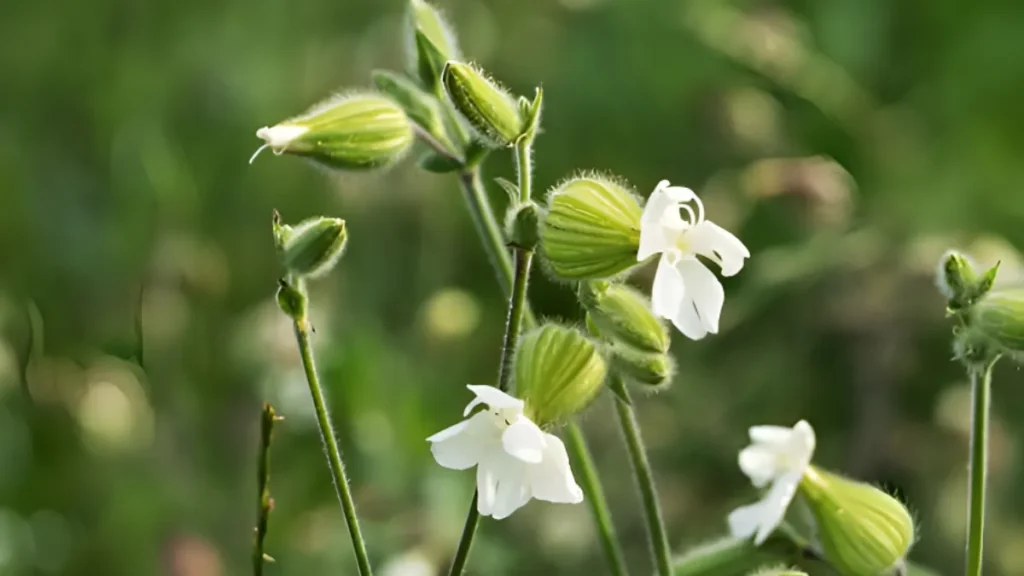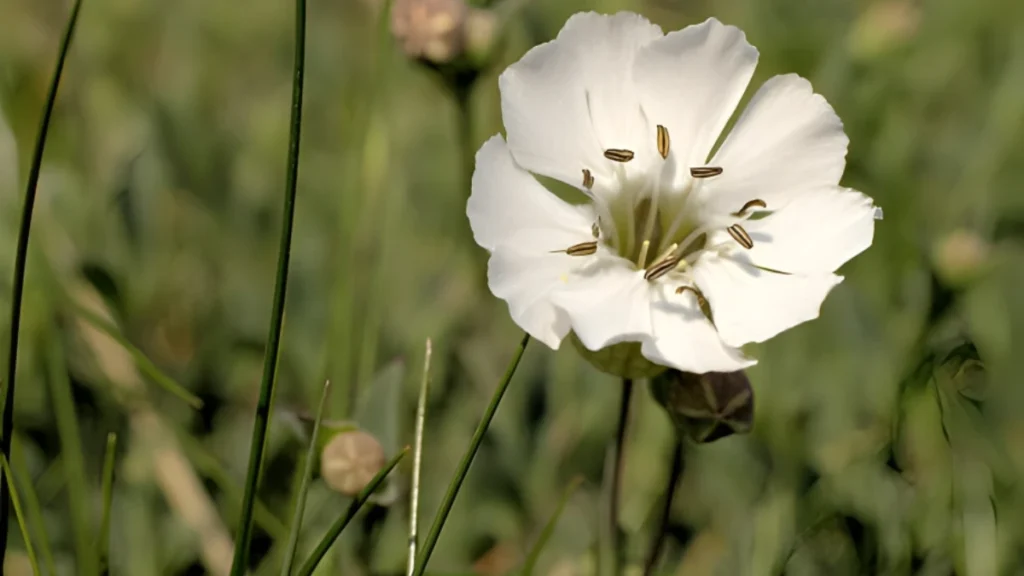A widespread weed in the Caryophyllaceae family, the white campion is also known as a white cockle. Initially, this broadleaf plant grows as a low-lying rosette. Pink garden flowers and other plants called champions, cockles, or catchflies are linked to white campion. Due to its rapid proliferation and competition for resources with native plants and crops, the white campion is regarded as a weed. This article discusses methods for eliminating white campion weed.
Methods of white campion identification:
Meadows, roadside ditches, and other open, disturbed places are typical habitats for white campion weed. These methods will help you recognize white campion weed.
- White campion weed was discovered on roads, meadows, and fields. It features hairy stems, deep grooves, and five-petaled white flowers. The fruit is a capsule.
- White Campion is sometimes referred to as “Evening Star.” In appearance, it resembles wild mustard and bladder campion. Late afternoon is when its blossoms open and remain open until dawn.
- As a dioecious plant, white campions have distinct male and female plants. Whereas female plants develop seed capsules, male plants grow more blooms to improve their chances of being pollinated.
Handling white campion weed:
Although it can be difficult to control white campion weeds, you can successfully control their spread. These are a few tactics.
White campion treatment:
- White campion plants can yield anywhere from 5,000 to 15,000 seeds each. As a result, managing white campion is comparable to managing dandelions and other herbaceous weeds. On lawns or farms, populations of this plant can be significantly decreased by mowing or tilling.
- It can be beneficial to regularly remove young white campion plants. Because even little root fragments might regenerate, be sure you remove the entire root. For established plants with deep tubercles, dig them up using a trowel or weeding instrument. This makes them less inclined to come back.

- The two most crucial control techniques are root system removal and preventing plant seeding. Although frequent mowing during the growing season can damage the plants, they do not require cutting before planting.
- Around desired plants, spread a thick layer of mulch to help suffocate weeds. Place landscaping cloth underneath the mulch to stop additional weed growth. Moreover, control white campion with a broadleaf weed-specific pesticide. Pay close attention to the directions at all times.
- Get rid of white campion by planting ground coverings that are dense and develop quickly. To stop the white campion from developing again, you must remove the entire taproot.
- Applications of herbicides in the fall are more successful than those in the spring. It’s best to use spring herbicides before flowering and bolting. To stop weeds from establishing, weeds should be removed as soon as possible and new growth should be regularly checked for.
Conclusion:
In conclusion, commonly considered a weed, white campion is a herbaceous plant that grows in a range of places, such as gardens, fields, and roadside ditches. It can be a food source for some herbivorous insects and draws pollinators like bees and moths. White campion weed can, however, become an issue in garden or agricultural environments. Often, it may be controlled with routine mulching, weeding, or, if required, herbicide application.
Certainly! If you’d like to learn more, please consider following our WhatsApp Channel: Harvest Gardening
A frequently asked questions:
Q1. What is white campion?
A1. A blooming plant of the Caryophyllaceae family, white campions are widely distributed throughout North America, Asia, and Europe.It typically grows well in open, disturbed areas such as fields, ditches beside roads, and gardens.
Q2. Is white campion poisonous?
A2.Indeed, there are substances in white campion that, if consumed, could be harmful to people. Symptoms include nausea, vomiting, and soreness in the abdomen.
Q3. What are white campion benefits?
A3. A flowering plant that supports pollinators like bees and butterflies, the white campion has several ecological advantages. Traditionally, it has been used as a diuretic and moderate anti-inflammatory.
Q4. What is the best form of weed control?
A4. In addition to targeted herbicide use, mulching, manual pulling, and routine mowing are the most efficient ways to control weeds. Applying herbicides sparingly and appropriately can help control weeds.
Q5. Is white campion a weed?
A5. Particularly in agricultural settings, white campion is frequently considered a weed due to its rapid growth and ability to outcompete other plants.
Q6. What is White Campion used for in medicine?
A6. White campion (Silene latifolia) has long been used in herbal therapy for its moderate diuretic and anti-inflammatory effects, and is frequently used to treat urinary tract infections and minor skin irritations. However, its medicinal usage has not been extensively established in recent clinical studies.



